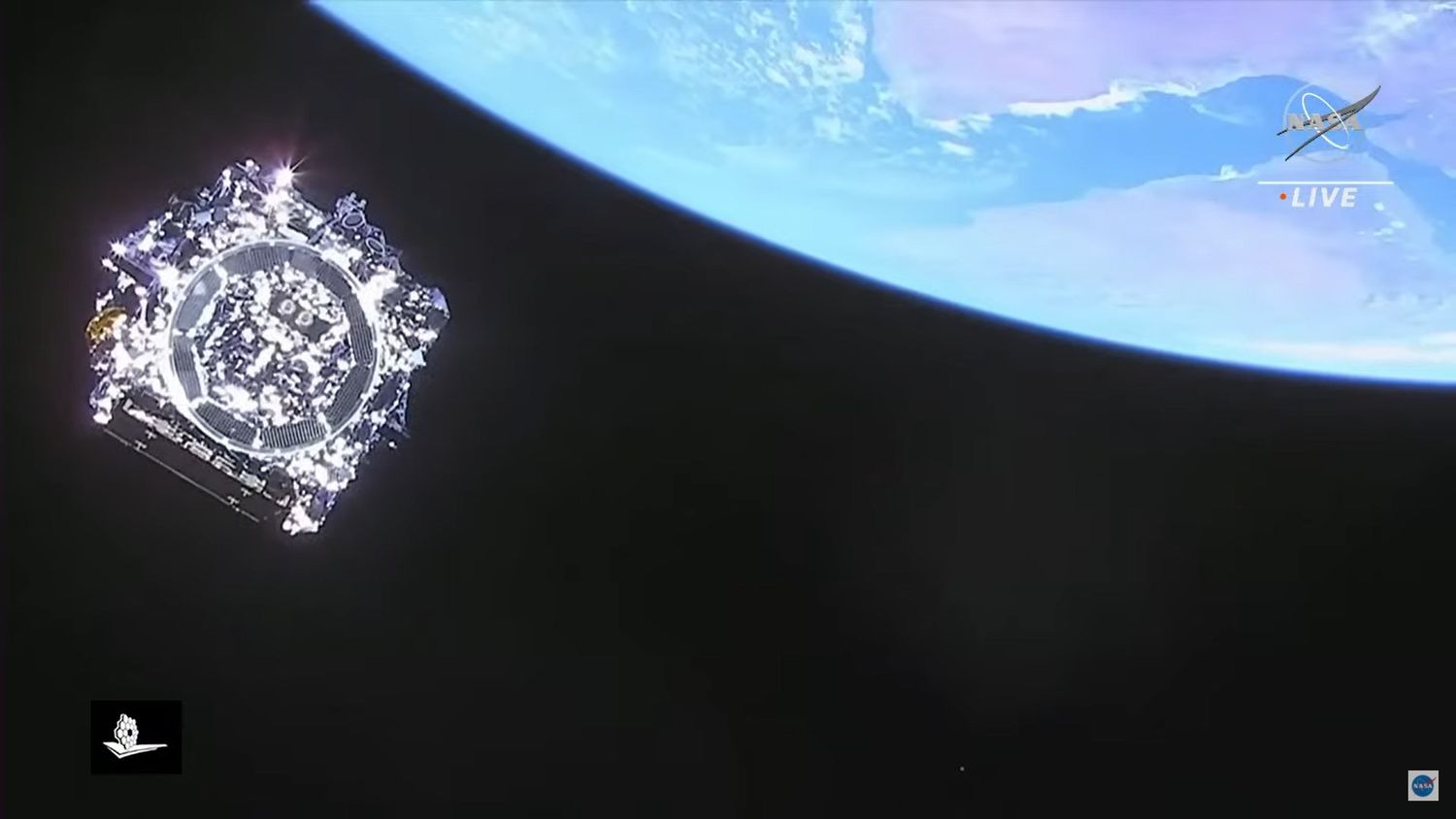NASA’s James Webb Space Telescope was launched early Saturday (25) morning at 7:20 a.m. EDT on an Ariane 5 rocket from Europe’s spaceport in French Guiana, South America.
The Webb observatory, a joint effort involving ESA (European Space Agency) and the Canadian Space Agency, stands as NASA’s revolutionary flagship mission to search for light from the earliest galaxies in the primitive universe and explore our own solar system, as well as planets orbiting other stars, so-called exoplanets.
«The James Webb Space Telescope represents the ambition that NASA and our partners hold to propel us into the future,» said NASA Administrator Bill Nelson. «The promise of Webb is not what we already know we will discover; it’s what we don’t already understand or can’t yet comprehend about our universe. I can’t wait to see what it discovers.»
Ground crews started receiving telemetry data from Webb about five minutes after launch. Arianespace’s Ariane 5 rocket performed as expected, separating from the observatory 27 minutes into the flight. The observatory was launched to an altitude of approximately 75 miles (120 kilometers).
About 30 minutes after launch, Webb deployed its solar array, and mission managers confirmed that the solar array was providing power to the observatory. After deployment of the solar array, mission operators will establish communication links with the observatory through the Malindi ground station in Kenya, and the Space Telescope Science Institute’s ground control in Baltimore will send the first commands to the spacecraft.
Engineers and ground controllers carried out the first of three mid-course correction pulses about 12 hours and 30 minutes after launch, firing Webb’s thrusters to maneuver the spacecraft on an optimal trajectory toward its orbit destination about 1 million miles from Earth.
«I want to congratulate the team on this incredible achievement – Webb’s launch represents an important moment not only for NASA but for thousands of people around the world who have dedicated their time and talent to this mission over the years,» said Thomas Zurbuchen, Associate Administrator of the Science Mission Directorate at NASA Headquarters in Washington. «Webb’s scientific promise is now closer than ever. We are on the verge of a time of truly exciting discoveries of things we’ve never seen or imagined before.»
The world’s largest and most complex space science observatory will now begin six months of space-based commissioning. At the end of commissioning, Webb will deliver its first images. Webb carries four state-of-the-art science instruments with highly sensitive infrared detectors of unprecedented resolution. Webb will study the infrared light from celestial objects with far greater clarity than ever before. This first-of-its-kind mission is the scientific successor to NASA’s flagship Hubble and Spitzer space telescopes and is built to complement and extend the scientific discoveries of these and other missions.
«The launch of the Webb Space Telescope is a turning point: this is just the beginning of the Webb mission,» said Gregory L. Robinson, Webb Program Director at NASA Headquarters. «We will now see Webb’s long-awaited, critical 29 days on the edge. When the spacecraft deploys into space, Webb will undergo the most difficult and complex rollout sequence ever attempted in space. Once commissioning is complete, we will see amazing images that will capture our imagination.»
The telescope’s revolutionary technology will explore every phase of cosmic history, from the interior of our solar system to the farthest observable galaxies of the primitive universe and everything in between. Webb will unveil unexpected new discoveries and help humanity understand the origins of the universe and our place in it.


Comentarios
Para comentar, debés estar registrado
Por favor, iniciá sesión